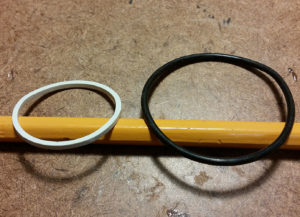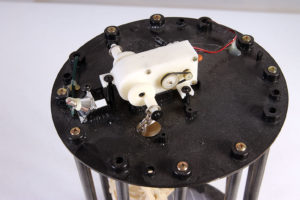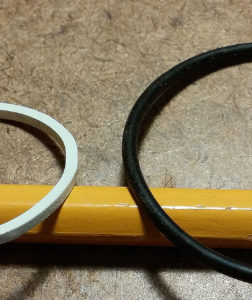
For a long time I considered ‘o-ring’ to be the proper terminology for a drive belt in little DIY (do it yourself) animatronic projects. But when trying to purchase some o-ring drive belts, I discovered that the term ‘o-ring’ by itself is technically wrong. O-rings are for sealing things (like valves).
Better terminology when using them to drive things (transfer power from one location to another) is ‘o-ring drive belt’, or even ‘urethane belt’, which most o-ring drive belts are made from. (Rubber bands are made from, well, rubber). (So if you’re searching Google or YouTube for information on o-ring drive belts, you’ll have much better results using the full term instead of just searching for o-rings).
Rubber bands are for holding things together.
Rubber bands do not make great o-ring drive belt replacements, but they can work OK in simple applications.
How to quickly tell the difference between o-rings and rubber bands: O-ring cross-sections are typically round and they stretch some, but not as much or as easily as rubber bands. Rubber bands typically have rectangular cross sections and stretch easily.
Imagine that you have a little hobby toy your are playing with and you are trying to rotate a shaft that is located a few inches away from your drive motor.
If you use a rubber band as the drive belt, the rubber band can ‘store’ energy as it stretches, and then it will finally transfer the power (rotate the shaft) after it has stretched to a certain point. This can make for a very uneven rotation, or it might just slip on the drive or driven shaft before ‘giving up’ its energy and result in complete failure to rotate the shaft at all.
The o-ring drive belt doesn’t stretch like the rubber band so rotation is much smoother. It also maintains its integrity much, much longer than rubber bands, which loose their strength and elasticity fairly soon.
White rubber band, black o-ring shown below.
Here’s a little video I made to show the difference in drive smoothness:
Here’s a page with some good information: http://www.applerubber.com/seal-design-guide/special-elastomer-applications/drive-belt.cfm
And here: http://www.durabelt.com/rubber-band-belts.php


